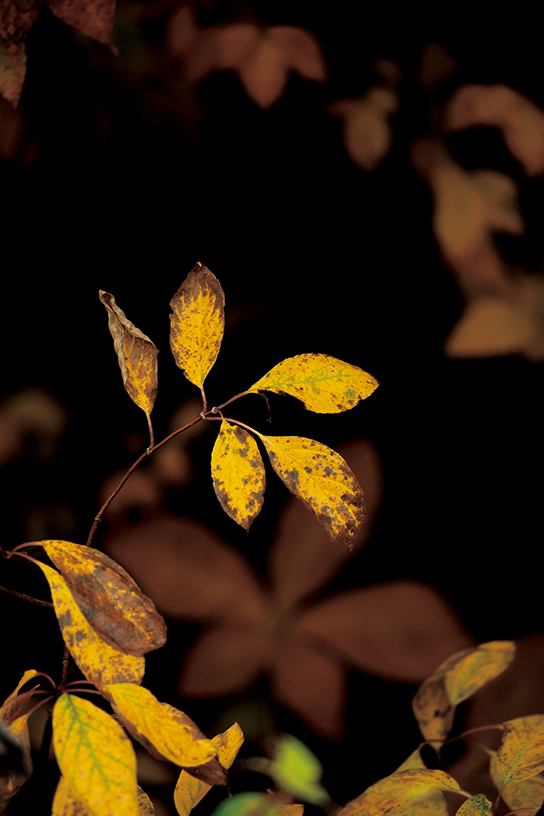A long focal length that's above 135mm does more than make faraway subjects fill more of the frame—it can also help you create unique visual effects! Here are some things to try with your telephoto lens, or perhaps even the long end of your superzoom lens.

1. Layer bokeh lights

EOS M10/ EF-M55-200mm f/4.5-6.3 IS STM @ 200mm (320mm equivalent)
Photo by: Sayaka Suzuki
You probably know that a wider maximum aperture creates a larger bokeh effect, but did you know that a long focal length also helps enhance bokeh? Find a backlit tree or bush with light reflecting off the leaves, aim at it with your telephoto lens, focus on the foreground, and watch the magic. Varying your angle, plane of focus and distances from the subject and background will give different results!
Learn more about how this shot was achieved
Tip: For even better results, use an even longer focal length and get close to the light source. This article shares how another photographer used a 100-400mm super telephoto zoom lens to capture dreamy images of decorative lights.
2. Use telephoto compression to immerse viewers in the scene

EOS 5D Mark II/ EF70-200mm f/2.8L IS II USM @ 200mm
Photo by: Masato Mukoyama
You can harness the perspective compression effect unique to a telephoto lens to shrink distances between elements and make things look closer together. Reducing wide, empty spaces in this manner could make a viewer more immersed in the scene, like what the photographer did in the image above.
Learn more about the creation process here
3. Make daytime outdoor portraits look like they were shot at night

EOS 5D Mark IV/ EF70-200mm f/2.8L IS II USM @ 160mm
Photo by: Seigi Takakuwa/ Model: Yuka Tsuji (Conerot)
Those huge bokeh circles may seem to be from the neon lights that liven up the city at night, but in reality, they are from car lights, and the image was shot in the daytime! Only a telephoto lens can make them look so big and nearby while capturing just enough background detail to create the illusion of night.
Learn how to pull off this useful hack along with other outdoor portrait photography tricks
Cool fact:
A telephoto zoom lens provides a versatile option for portraits, letting you frame full body shots all the way to close-ups and even shoot environmental portraits of wedding couples, all without having to change your lens. The longer focal lengths let you take candid shots of kids being kids, unnoticed by your subjects.
4. Take unique macro-style close-ups
Telephoto lenses usually have a longer closest focusing distance, which allows you to be further away from your subject when you achieve the maximum magnification. You can make use of the extra space in between to incorporate foreground and background elements, which, when combined with the lens’ shallow depth of field, can result macro-like shots with a rather unique perspective!
The articles below show how two photographers harnessed this effect to create different outcomes. Such versatility is one reason why some natural landscape photographers prefer using telephoto zoom lenses!
A dreamy flower wonderland

EOS 6D/ EF300mm f/2.8L IS USM @ 300mm
Photo by: Yukie Wago
The dreamy image above was achieved by carefully incorporating backlight and bokeh.
Learn more about how it was shot and edited
Portrait of a plant tinged with character

EOS 5D Mark IV/ EF100-400mm f/4.5-5.6L IS II USM @ 360mm
Photo by: GOTO AKI
Even if you are more inclined towards capturing the raw, authentic aspects of things, framing—including how you make full use of your lens—contributes to the impact of your shot.
5. Zoom in on abstract details

EOS 5D Mark III/ EF70-200mm f/4L IS USM @ 187mm
Photo by: GOTO AKI
It’s fun to play with different special effects, but if you need a break, simply observing the things around you through the long end of your lens could also yield interesting results.
Look for shapes, contrasts, patterns, and other things that you usually wouldn’t be able to see up close, and see how you can frame them in a compelling way, just like how the shot above draws our attention to the contrast between the dynamic, flowing water and the still, unyielding rock surface of a waterfall.
Learn more about the thought process behind the shot
---
Can’t decide which telephoto lens to buy, or want to learn more about how you can use these lenses? Check out the following articles:
What is the difference between a 200mm and 300mm telephoto lens?
What is the difference between an f/2.8 and an f/4 telephoto zoom lens?
Improve Your Travel Photos Using a Telephoto Zoom Lens
Professional Composition Techniques (3): Making Good Use of Lenses
Receive the latest update on photography news, tips and tricks.
Be part of the SNAPSHOT Community.
Sign Up Now!









































